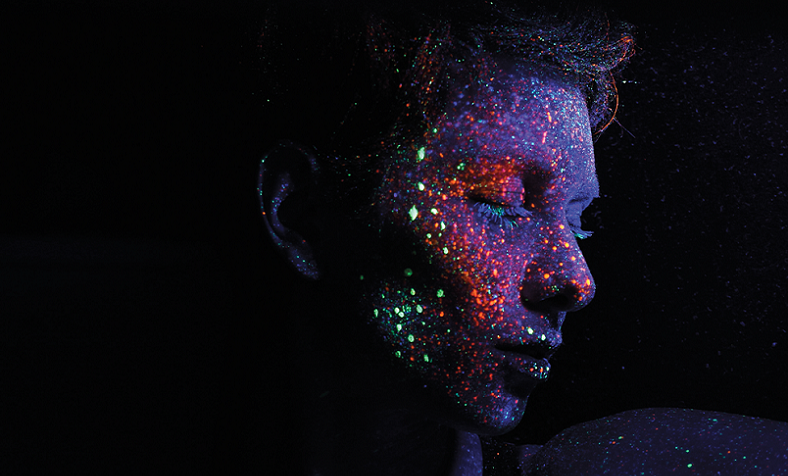
Psychodermatology is a rapidly growing field that explores the intricate relationship between our minds and our skin. The concept might seem novel, but the connection between our emotional health and the condition of our skin has been underlined by numerous scientific studies and centuries of anecdotal evidence. Here we unravel the biological basis for this mind-skin connection, delve into various skin conditions influenced by our emotional state, and discuss the emotional impact of chronic skin disorders.
Contents
Introduction to Psychodermatology
Psychodermatology, a discipline at the intersection of dermatology and psychology, has been gaining increasing attention in the medical field. But what exactly is psychodermatology? And how did this discipline emerge?
Definition and Overview of Psychodermatology
Psychodermatology is a multidisciplinary field that focuses on the interplay between the mind and the skin. It’s based on the understanding that our emotions and mental state can significantly influence the health and appearance of our skin. Likewise, skin conditions can have substantial impacts on our mental and emotional well-being. This mind-skin interaction is the cornerstone of psychodermatology, bridging the gap between our physical and psychological health.
Psychodermatologists are trained in both dermatology and psychiatry or psychology, allowing them to provide holistic care to their patients. They are equipped not only to treat physical skin conditions but also to understand and address the psychological factors contributing to these conditions.
Historical Background and Development of Psychodermatology
The notion of a connection between the mind and the skin is far from new. Ancient civilizations such as the Egyptians and Greeks recognized that emotional stress could trigger or exacerbate certain skin conditions. However, it wasn’t until the late 20th century that this connection began to be systematically studied and understood within the scientific community, leading to the formal emergence of psychodermatology as a specialized field.
Initially, the field faced skepticism, as the medical community traditionally separated physical and mental health. However, as more research validated the link between psychological factors and skin conditions, the importance of a holistic approach to skin health was increasingly recognized.
In the past few decades, psychodermatology has grown significantly both in practice and in public awareness. It is now a recognized subspecialty in many countries, and numerous psychodermatology clinics and research units have been established worldwide. With a growing body of research and increasing understanding of the mind-skin connection, the future of psychodermatology promises to be exciting and transformative in the realm of skin health [1].

Understanding the Mind-Skin Connection
Now that we’ve established a basic understanding of what psychodermatology is, let’s delve into the mechanics of the mind-skin connection. It’s a captivating interplay involving our nervous system, hormones, and immune responses.
The Physiological Connection between the Brain and the Skin
The skin, our largest organ, is more than just a physical barrier protecting us from external threats. It’s an incredibly active system that communicates constantly with our brain. Both the skin and the brain originate from the same embryonic layer, the ectoderm, which is why they share many common structures and functions.
Our skin contains a vast network of nerves and is densely populated with various types of receptors that can sense changes in the environment, such as temperature, pressure, and pain. These receptors send signals to the brain, which responds by triggering appropriate reactions, such as sweating when it’s hot or goosebumps when it’s cold [2].
The Role of the Nervous System in Skin Reactions
The nervous system plays a pivotal role in the functioning of our skin. The connection between the skin and the brain is maintained through a complex network of nerve fibers and chemical messengers, known as neurotransmitters.
When we experience emotional stress, our brain activates the “fight or flight” response, leading to the release of stress hormones like cortisol. These hormones can cause inflammation and disrupt the normal functioning of the skin, leading to or worsening skin conditions. For instance, cortisol can make the skin more sensitive and reactive, impair wound healing, and disrupt the skin’s ability to maintain moisture [3].
The Impact of Emotional Stress on Skin Conditions
Emotional stress can directly impact the severity and course of various skin conditions. Stress-induced inflammation can trigger flare-ups of conditions like psoriasis and eczema. Moreover, stress can exacerbate acne by increasing sebum production and can also lead to behaviors that worsen skin conditions, such as scratching, picking, or neglecting skincare routines.
In addition to acute stress responses, chronic stress can also have detrimental effects on skin health. Long-term stress can weaken the skin’s ability to act as a barrier, making it more susceptible to allergens, irritants, and pathogens. Understanding the complex connection between our minds and our skin helps to underline the significance of a psychodermatological approach to skin health.
Common Skin Conditions Related to Psychological Factors
Now that we’ve established the mind-skin connection, it’s time to look at some of the most common skin conditions that are influenced by our emotional state. Many people are surprised to learn that their stress, anxiety, or depression can manifest physically, particularly in their skin.
Psoriasis and the Effects of Stress
Psoriasis, a chronic autoimmune condition that causes red, scaly patches on the skin, is one of the most studied skin conditions in psychodermatology. Research has shown a strong link between stress and psoriasis flare-ups. Stress can trigger the immune response that leads to the rapid overproduction of skin cells, resulting in the characteristic patches of psoriasis.
Moreover, living with psoriasis can itself be a source of stress and anxiety, creating a vicious cycle that can be challenging to break. A psychodermatological approach to treating psoriasis often involves stress management techniques to help disrupt this cycle [4].
Eczema and Emotional Triggers
Eczema, or atopic dermatitis, is a condition that causes the skin to become red, itchy, and inflamed. Emotional stress is recognized as a common trigger for eczema flare-ups. When we’re stressed, our bodies produce more cortisol, which can lead to inflammation and an overactive immune response, resulting in eczema symptoms.
In addition, the constant itch and discomfort from eczema can lead to sleep disturbances and a significant amount of stress, further exacerbating the condition. A holistic approach to managing eczema may involve both topical treatments and cognitive-behavioral strategies to manage stress [5].
Acne and the Role of Anxiety
The relationship between acne and stress is a two-way street. Increased stress levels can lead to an overproduction of sebum, an oily substance that clogs pores and contributes to acne. Anxiety can also lead to behaviors that worsen acne, such as excessive face touching or picking at blemishes.
Conversely, living with acne can contribute to feelings of anxiety and poor self-esteem, particularly in social situations. A comprehensive acne treatment plan should take into account these psychological factors, often incorporating stress management and self-care techniques alongside traditional acne treatments.
Hair Loss and Depression
Hair loss can be a distressing condition, and it’s often linked to both physical and psychological factors. Conditions like telogen effluvium, which involves temporary hair shedding, and alopecia areata, characterized by patches of hair loss, can both be triggered or worsened by intense stress or emotional trauma.
Moreover, the experience of losing hair can itself cause considerable emotional distress, contributing to feelings of depression or anxiety. Therefore, a psychodermatological approach to hair loss might involve psychological support and stress management, in addition to medical treatments to stimulate hair growth.
Hives and the Impact of Stress
Hives, also known as urticaria, are red, itchy welts that can appear on the skin in response to certain triggers. While hives can be caused by various factors, including allergies and infections, stress is a well-known trigger. When we’re stressed, our bodies release histamine, a chemical that can cause inflammation and itching in the skin, leading to hives.
Managing stress can be a crucial part of treating chronic hives, along with antihistamines and other medications. Mindfulness techniques, relaxation exercises, and cognitive-behavioral therapy can all be useful tools in managing stress-related hives.
The intricate interplay between these skin conditions and our emotional state underscores the importance of addressing both the physical symptoms and the psychological factors when treating these disorders. By acknowledging and treating the psychological components, we can not only better manage these skin conditions but also improve our overall well-being.

The relationship between the mind and the skin isn’t just a one-way street. Just as our emotional health can impact our skin, our skin conditions can significantly impact our psychological well-being.
The Emotional Toll of Chronic Skin Conditions
Living with a chronic skin condition can be emotionally challenging. Constant discomfort, itchiness, or pain can lead to feelings of frustration, helplessness, and even depression. The ongoing management of these conditions—applying creams, taking medication, visiting doctors—can also be time-consuming and emotionally draining.
Furthermore, the unpredictable nature of many skin conditions, with periods of remission and unexpected flare-ups, can create a sense of uncertainty and anxiety. For many individuals, this ongoing emotional stress can be just as challenging to manage as the physical symptoms themselves [6].
Body Image and Self-Esteem Issues Associated with Skin Disorders
Skin conditions can significantly impact a person’s self-esteem and body image. Our skin is a visible representation of ourselves, and changes in its appearance can affect how we perceive ourselves and how we believe others perceive us.
Conditions like acne, psoriasis, or vitiligo can lead to feelings of embarrassment, shame, or self-consciousness. This can be particularly challenging for adolescents and young adults, who are often already grappling with body image issues. Over time, these negative feelings can erode self-esteem and contribute to mental health conditions like depression or anxiety.
The Impact of Skin Conditions on Social Interactions and Relationships
Skin conditions can also affect social interactions and relationships. Visible skin conditions might lead to unwanted attention or insensitive remarks, leading individuals to avoid social situations and potentially contributing to feelings of isolation.
In more severe cases, people may struggle with intimacy due to fears of rejection or judgment based on their skin condition. It’s also common for people with chronic skin conditions to experience difficulties at work or school, either due to the physical discomfort of the condition or due to associated psychological stress.
These psychosocial impacts of skin conditions highlight the importance of a holistic approach to skin health, one that considers not just the physical symptoms but also the emotional and social implications. In the following section, we’ll explore the various psychodermatological treatment approaches that aim to address these multiple facets of skin conditions.

Approaches to Psychodermatological Treatment
As we’ve discussed, our emotional health can significantly influence our skin, and vice versa. This complex interplay necessitates a comprehensive treatment approach that addresses both aspects.
Conventional Dermatological Treatments
Traditional dermatological treatments form the backbone of managing skin conditions. These may include topical creams or ointments, oral medications, light therapy, or even surgical interventions, depending on the specific skin condition. For instance, corticosteroid creams might be used for eczema, while antibiotics or retinoids might be prescribed for acne [7].
However, in a psychodermatological approach, these treatments are typically used in conjunction with psychological interventions and lifestyle modifications to address the multifaceted nature of skin conditions.
Psychological Therapies
Psychological therapies are a vital component of psychodermatological treatment. Cognitive-behavioral therapy (CBT) is often used to help patients identify and manage stressors, develop coping strategies, and change behaviors that may be exacerbating their skin condition.
For instance, CBT can help an individual with psoriasis manage stress to prevent flare-ups or help someone with acne resist the urge to pick at their skin. Psychological therapies can also address the emotional impact of skin conditions, helping individuals cope with feelings of anxiety, depression, or low self-esteem related to their skin condition.
Lifestyle Modifications
Lifestyle modifications are another important aspect of psychodermatological treatment. These can include stress management techniques, regular exercise, maintaining a balanced diet, getting adequate sleep, and proper skin care routines.
Stress management techniques, such as relaxation exercises, yoga, meditation, or mindfulness, can help lower cortisol levels and reduce inflammation. Regular exercise can boost mood and decrease stress levels, while a balanced diet can provide the nutrients necessary for healthy skin.
Holistic Mind-Body Therapies
In addition to these treatments, many psychodermatologists are also exploring the use of holistic mind-body therapies. These therapies, which include practices like acupuncture, hypnosis, and biofeedback, aim to harness the power of the mind to influence physical health.
For instance, hypnosis has been used to help patients with eczema or psoriasis reduce itching and discomfort, while biofeedback can help patients better control their stress response to prevent or manage flare-ups. These therapies provide additional tools in the psychodermatologist’s arsenal, offering a truly comprehensive approach to skin health.
References
[1] Psychodermatology: The Mind and Skin Connection
[2] Psychodermatology: When the Mind and Skin Interact
[3] Psychodermatology: A Guide to Understanding Common Psychocutaneous Disorders
[4] Psychodermatology: Where the skin and mind meet
[5] Psychodermatology: Understanding the Mental Health Component of Skin Conditions
[6] The link between skin and psychology
[7] Psychodermatology: Basics Concepts







